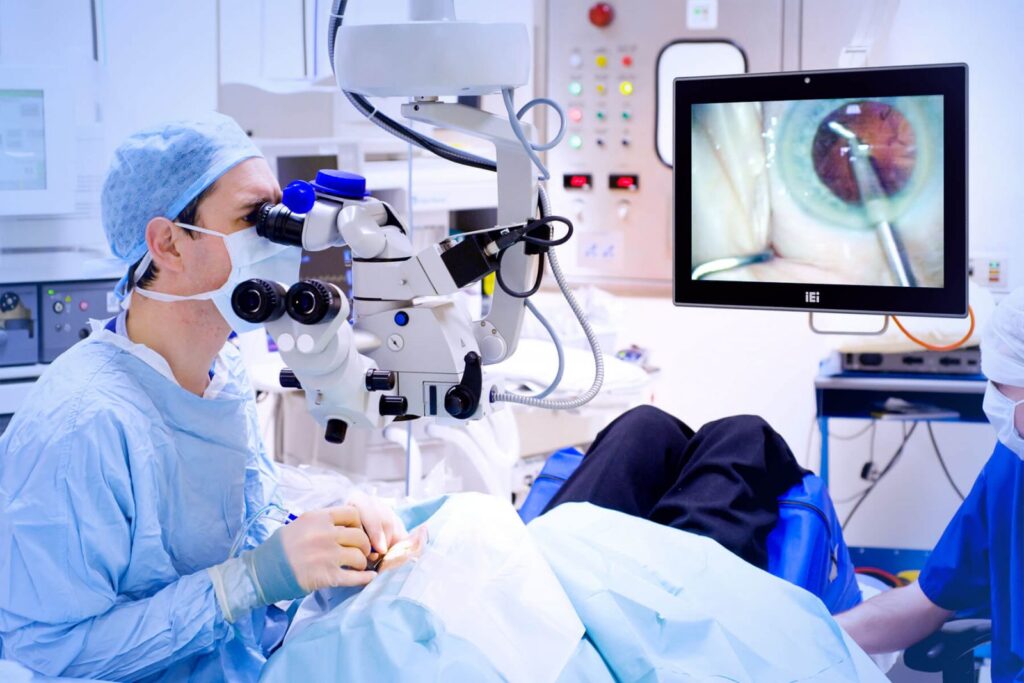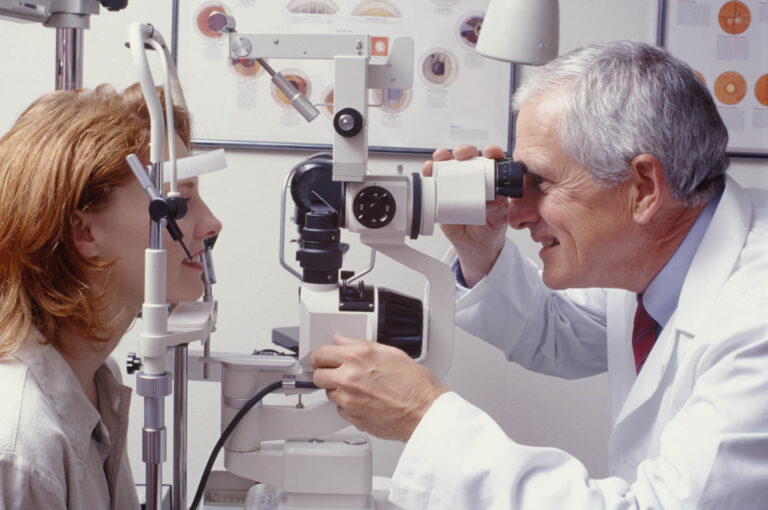Exploring the Benefits of Advanced Technology Cataract Surgery
Advanced technology cataract surgery has revolutionized the field of ophthalmology, providing patients with improved outcomes and enhanced vision. Understanding cataract and the advancements in surgical techniques is essential in making informed decisions about treatment options. This article will delve into the benefits of advanced technology cataract surgery, the role of innovative technologies, and the potential risks and complications associated with the procedure. Additionally, we will explore the future of cataract surgery, including emerging technologies and the integration of artificial intelligence.
Understanding Cataract: A Brief Overview
Cataract is a common age-related eye condition characterized by the clouding of the eye’s natural lens. This clouding progressively impairs vision and can eventually lead to blindness if left untreated. Cataracts surgery is the most effective treatment for this condition, involving the removal of the cloudy lens and replacement with an artificial intraocular lens (IOL).
Traditionally, cataract surgery involved manual incisions and the use of ultrasound energy to break up and remove the cloudy lens. However, the advent of advanced technology has transformed the surgical process, offering numerous benefits and improved patient outcomes.
What is Cataract Surgery?
Cataract surgery is a safe and common procedure performed to remove the clouded lens and replace it with an artificial IOL. During the surgery, the surgeon creates a small incision in the cornea and uses ultrasound energy or laser technology to break up the cataract. The fragmented lens is then removed, and the IOL is implanted to restore clear vision.
Traditional vs Advanced Technology Cataract Surgery
While traditional cataract surgery has been successful for decades, advanced technology cataract surgery offers distinct advantages. Laser-assisted technology allows for precise incisions, reducing the risk of complications and improving overall surgical outcomes. Additionally, innovative intraocular lenses provide patients with enhanced visual quality and reduced dependence on glasses or contact lenses.
One of the key advancements in cataract surgery is the use of femtosecond laser technology. This cutting-edge technology allows surgeons to create precise incisions with unmatched accuracy. By using laser energy, the surgeon can create incisions that are tailored to the patient’s unique eye anatomy, resulting in a more customized and precise surgical procedure.
Another significant development in cataract surgery is the availability of premium intraocular lenses. These lenses go beyond simply restoring clear vision; they can also correct other vision problems such as astigmatism or presbyopia. This means that patients who opt for advanced technology cataract surgery may experience improved visual acuity and reduced reliance on glasses or contact lenses for various activities.
The Advent of Advanced Technology in Cataract Surgery
The integration of advanced technology in cataract surgery has significantly improved patient experiences and outcomes. Two notable advancements include laser technology and innovative intraocular lenses.
As the field of ophthalmology continues to progress, the role of technology in cataract surgery becomes increasingly vital. Beyond just improving outcomes, these technological advancements have revolutionized the way surgeons approach and perform these procedures, ultimately benefiting patients in numerous ways.
The Role of Laser Technology
Laser technology has transformed cataract surgery by providing surgeons with advanced precision and control. Femtosecond lasers are utilized to create precise incisions, optimize the opening of the lens capsule, and fragment the cataract. This technology leads to improved surgical accuracy, fewer complications, and faster recovery times.
Furthermore, the integration of laser technology in cataract surgery has paved the way for customized treatment plans tailored to each patient’s unique eye anatomy. This level of personalization ensures that the surgical process is not only more precise but also more efficient, ultimately leading to better visual outcomes and patient satisfaction.

Innovations in Intraocular Lenses
Intraocular lenses have evolved significantly in recent years, offering patients a range of options to meet their specific needs and lifestyle. Advanced technology lenses can correct refractive errors such as astigmatism and presbyopia, reducing the need for glasses or contact lenses after surgery. These innovative lenses also provide enhanced contrast sensitivity and better overall visual quality.
Moreover, the continuous advancements in intraocular lens technology have opened up new possibilities for patients, allowing them to not only restore their vision but potentially enhance it beyond what was previously achievable. With the ability to address multiple visual issues simultaneously, these lenses represent a significant leap forward in the field of cataract surgery and vision correction.
Key Benefits of Advanced Technology Cataract Surgery
Precision and Accuracy
One of the primary benefits of advanced technology cataract surgery is increased precision and accuracy. Laser-assisted incisions and lens fragmentation ensure optimal alignment and positioning of the IOL. This precision leads to improved visual outcomes and a reduced risk of astigmatism.
Enhanced Vision Quality
Advanced technology intraocular lenses, such as multifocal and toric lenses, offer improved vision quality compared to traditional monofocal lenses. These lenses can correct astigmatism and provide clear vision at various focal distances, reducing reliance on glasses for both distance and near vision tasks.
Reduced Recovery Time
With advanced technology cataract surgery, the recovery period is often shorter and smoother compared to traditional surgery. Laser-assisted incisions promote faster healing, and the precise IOL placement allows for rapid visual rehabilitation. Patients can typically return to their normal activities within a few days after surgery.
Furthermore, advanced technology cataract surgery techniques have been shown to result in fewer complications post-surgery. The use of femtosecond lasers in cataract surgery allows for a bladeless and highly controlled incision process, reducing the risk of infection and inflammation. Additionally, the advanced imaging technology used in these procedures enables surgeons to customize treatment plans based on each patient’s unique eye anatomy, leading to more predictable outcomes.
Another advantage of advanced technology cataract surgery is the potential for enhanced safety during the procedure. The real-time imaging feedback provided by intraoperative aberrometry allows surgeons to make immediate adjustments, ensuring optimal lens placement and alignment. This level of precision not only enhances visual outcomes but also minimizes the likelihood of post-operative complications, such as residual refractive errors.

Potential Risks and Complications
Understanding the Risks
Although advanced technology cataract surgery is generally safe, like any medical procedure, it carries some risks. These risks may include infection, inflammation, bleeding, or complications related to the IOL. However, the overall risk of complications is low, and expert surgeons take measures to minimize these risks through meticulous surgical techniques and preoperative assessments.
It is important for patients to understand that while complications are possible, they are rare and the vast majority of cataract surgeries are successful. Infection is one of the most concerning risks, but with the use of sterile techniques and antibiotics, the incidence of postoperative infections is extremely low. Inflammation and bleeding are also potential risks, but these are typically well-managed with medications and close monitoring.
Mitigating the Complications
Surgeons carefully assess each patient’s unique characteristics and needs prior to surgery to minimize potential complications. Thorough preoperative evaluation, including comprehensive eye examinations and medical history reviews, allows for tailored treatment plans. Close postoperative follow-up care also ensures early detection and management of any complications that may arise.
Furthermore, advancements in surgical technology and techniques have significantly reduced the risk of complications associated with cataract surgery. For example, the use of smaller incisions and phacoemulsification, a method that breaks up the cataract for easier removal, have led to quicker recovery times and fewer complications. Additionally, the development of premium IOLs has provided patients with options to correct their vision and reduce their dependence on glasses after surgery.
The Future of Cataract Surgery
Emerging Technologies and Techniques
The future of cataract surgery holds exciting prospects with the development of emerging technologies and techniques. Artificial intelligence (AI), for example, has the potential to assist surgeons in the preoperative planning, intraoperative decision-making, and postoperative monitoring phases. AI algorithms can analyze vast amounts of data to optimize surgical outcomes and enhance patient safety.
The Role of Artificial Intelligence in Cataract Surgery
Artificial intelligence can aid in the identification of patterns and predictive modeling to improve surgical accuracy and outcomes. By harnessing the power of AI, cataract surgery will become even more precise, personalized, and efficient, ensuring each patient receives the optimal treatment tailored to their unique visual needs.
As technology continues to evolve and innovate, advanced technology cataract surgery will only become more refined, providing patients with improved visual outcomes and a higher quality of life. It is essential for patients and surgeons alike to stay informed about these advancements and explore the benefits they offer in the realm of cataract surgery.
Furthermore, the integration of robotics in cataract surgery is another groundbreaking development on the horizon. Robotic-assisted cataract surgery allows for unparalleled precision and control during the procedure, potentially leading to better visual acuity and faster recovery times for patients. The robotic systems are designed to work in tandem with the surgeon’s movements, offering a level of accuracy that surpasses traditional surgical methods.
With the convergence of AI, robotics, and other cutting-edge technologies, the future of cataract surgery is poised to revolutionize the field and set new standards for surgical excellence. Patients can look forward to safer, more efficient procedures with enhanced visual outcomes, marking a significant advancement in the treatment of cataracts.

